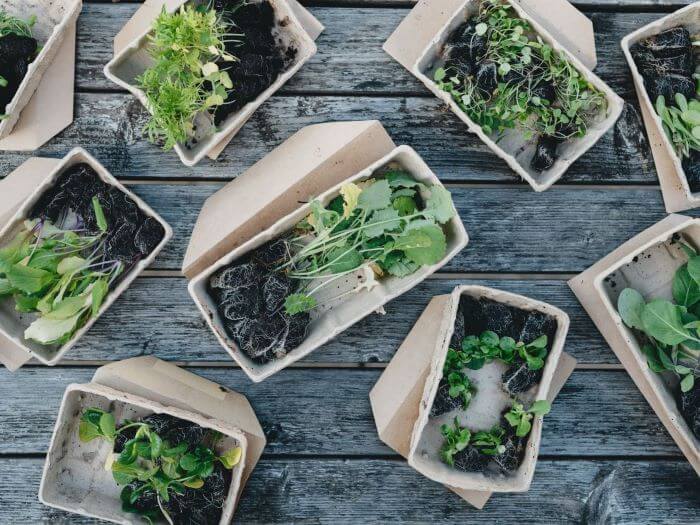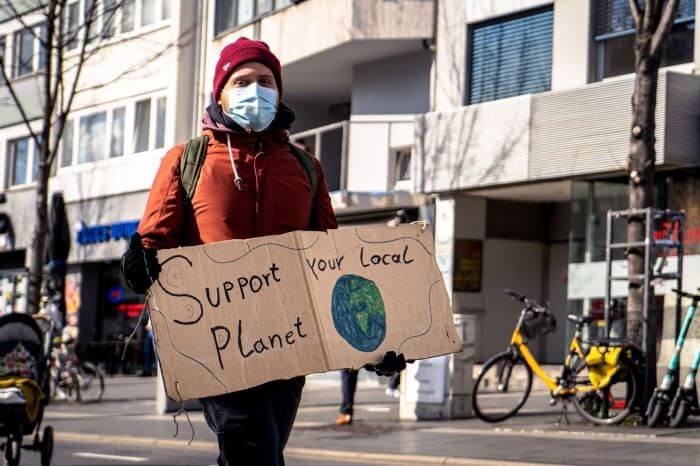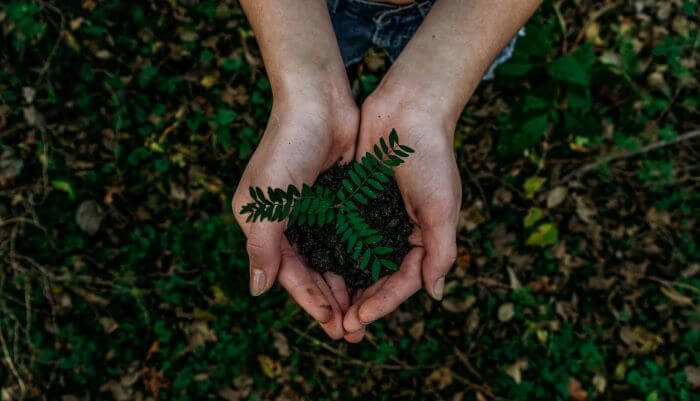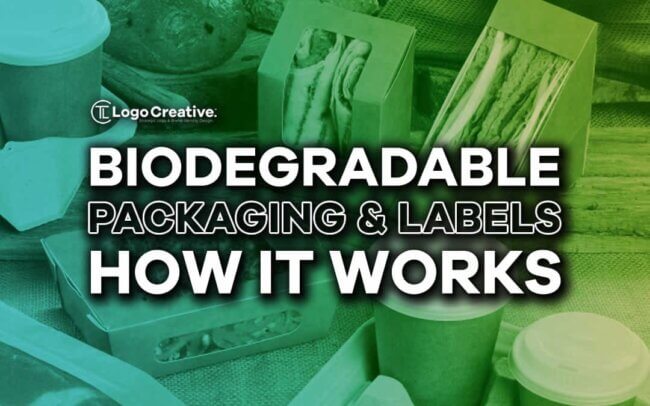Read on to learn more about what biodegradable packing is, how it works, and what its benefits are.
Table of Contents
An Informative Guide to Biodegradable Packaging and Labels

Within all industries, finding ways to be more sustainable and kinder to the environment is a significant focus point for companies. It is the biggest trend in the corporate world, and failing to meet consumer standards and expectations can harm your performance in a competitive field.
The manufacturing world is not immune to these demands, with businesses adapting their ways to follow a more sustainable model. Labels and packaging are major talking points, as these materials are often the first to clutter a landfill or pollute the ocean.
From label printers producing eco-friendly tags and labels to biodegradable packaging, shifting your solutions to more green-friendly options will create massive benefits moving forward.
What is Biodegradable Packaging?

Biodegradable packaging is typically described as any form of packaging that will naturally disintegrate and decompose without posing a harmful risk to the environment. It is a term that has been used very broadly for sustainable packing materials that will break down under any conditions and over an undefined amount of time.
The issue, however, is that anything from a wooden box to eco-friendly packing peanuts falls into the same category, despite the fact that the peanuts can be disposed of within minutes.
In contrast, a wooden box would take decades, even centuries, to properly disintegrate. This can still cause harm to the environment, meaning companies and consumers are looking for materials that will break down in a safe and reasonable amount of time.
How to Identify It?
The easiest and most surefire way of knowing if the material you are getting is genuinely biodegradable is looking for certified packages marked with ‘compostable’.
These materials have been approved to degrade in commercial or home compost heaps safely and guarantee a pre-defined time frame for breakdown under the proper conditions.
This typically occurs within six months to a year, leaving behind nutrient-rich soil with the proper microbes, heats, oxygen, moisture and sunshine levels.
What are Biodegradable Materials?
Biodegradable materials are commonly considered materials only made from bio-based or plant-based sources. But that isn’t accurate. The ability to be biodegradable depends mainly on the molecular structure and strength of a material’s polymer chain.
This chain needs to be able to break down successfully into tiny pieces that microorganisms can then digest.
By understanding this process, one can see that both bio-based and fossil-based polymers can be considered ideal biodegradable packaging. Fossil-based materials contain hydrocarbons and are found underground in the remains of dead plants and animals. Humans can extract these fossils and burn them, releasing natural energy.
While fossil fuels have strong, non-degradable carbon chains found in most plastics, petroleum-based plastics are weaker and properly degrade while still maintaining regular plastic’s attractive qualities.
Types of Packaging

There are several different types of degradable packaging available, but it is essential to check whether the option you have chosen is safe for food if applicable, as not all are. In addition, several packaging types are currently in use in the industry.
Hemp
Sourced from the cannabis plant, hemp is a very versatile and resilient material that easily biodegrades. However, it is still a fairly expensive source of bioplastics and, due to the cost, has yet to be introduced commercially in its polymerised form.
Paper
Paper is one of the oldest forms of traditional compostable packaging. Not only does it break down at an accelerated speed, but it can also be reused and recycled very efficiently. However, there are two downsides to using paper. Firstly, to source paper, deforestation has to occur. This activity will only increase as the popularity of paper does.
Additionally, it offers a different level of protection or sealing than some other types do, making it inappropriate for nearly all food packaging
PLA
PLA is bio-based and can be moulded like conventional plastic for packaging across most industries. However, it has a slow-composting rate, even on an industrial scale, making it a potential environmental risk.
Cellulose
Cellulose is a plant-based packaging that degrades quickly and is the perfect solution for short-term packaging needs. However, this decomposition level means it cannot provide adequate barriers for food products with a longer shelf life, and discolours easily when filled.
Seaweed
Seaweed is somewhat uncommon in the world of eco-friendly packaging, but like cellulose, this natural material is highly-degradable and perfect for short-term packaging. Unfortunately, it is unstable and unsuitable for food, transport or storage, meaning it is not a popular material to choose.
Benefits
The advantages of biodegradable packaging in all forms are clear to see. It is kinder to the environment, the planet’s future and the food industry’s overall sustainability. Furthermore, it can reduce costs, increase consumer popularity and set your company apart from competitors. These are just some of the many benefits that arise from biodegradable packaging.
Support Farming
Bio-food packaging encourages and fuels a circular economy, as the waste from these materials will act as compost, providing nutrients to the soil and boosting food production and farming.
Reduces Waste
A very important benefit is the potential for reduced overall waste, particularly in the food industry. Instead of tons of plastic ending up in landfills, oceans and other natural habitats, biodegradable packaging will naturally and safely decompose without a trace.
Returns to Nature
Finally, certified compostable packing is specifically designed to decompose under the proper conditions within a certain period. This means it is guaranteed to return to its natural form, which can take up to a year in household compost bins or three to six months on a commercial level.
Further Reading: How the Right Packaging Impacts Brand Identity.
Reduces Waste
A very important benefit is the potential for reduced overall waste, particularly in the food industry. Instead of tons of plastic ending up in landfills, oceans and other natural habitats, through practices like fly tipping (which you can learn more about with these surprising facts about fly tipping), biodegradable packaging will naturally and safely decompose without a trace.
Join The Logo Community
We hope this article about Biodegradable Packaging and Labels: How it Works has been helpful. If you would like more personal tips, advice, insights, and access to our community threads and other goodies, join me in our community. You can comment directly on posts and have a discussion.
*TIP – We use and recommend DesignCuts for all your fonts, mockups and design bundles.


